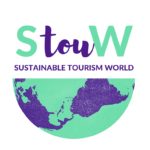Hello STWlovers,
Today I am happy to share with you an interesting practical framework for approaching sustainable development and the green economy. It was developed by Marilyn Waite, an author with extensive knowledge in sustainability.

The SURF approach is a holistic approach to sustainability; I am sharing it with you because I found it to be the possible solutions for every needs a company, an organisation or an entire sector such as tourism may have.
For those attempting to translate the broad definitions of sustainable development into real transformation for a product, service, result, process, or entire organization, there are two extremes:
– practitioners find that theoretical literature has very macroscopic ideas for sustainable development and sustainability;
– there is a large body of specific tools such as life cycle analysis that can enable sustainable development decision-making;
When trying to determine how to design company “x” as a sustainable one, the practitioner must be able to merge these two extremes. The SURF framework provides a streamlined method that encompasses both ends.
The present practise tends to focus on what is being sold or offered to the end-user. What is often missing is
(1) the entire life cycle supply chain that makes up the item being offered,
(2) the end user itself (what happens with the product or service once it is delivered),
(3) positive relations with all stakeholders connected to and impacted by the offer, and
(4) a product or service that is mindful of future generations.
SURF stands for supply chain considerations that address sustainability criteria; user considerations that address sustainability criteria; relations with employees, colleagues, the surrounding community, and society at large; and concern for future generations.
Social, environmental, and economic concerns underlie each element of SURF, with future planning also receiving adequate attention.
Source: http://www.ccsenet.org/journal/index.php/jms/article/view/27508
A sample in the tourism sector: a hotel. This sample is not exhaustive, I just want to help you, better understand the approach.
Hotel
– Supply chain: bath & bed linen (owned or rented), laundry service, food, cleaning products, bathroom products, transport, office materials (computers, paper, pens, etc.).
– Users: hotel guests (that use lights, water, heater/air conditioner, etc.)
– Stakeholder Relations: the surrounding community of the hotel, workers (including conditions), people impacted by shared resources such as a nearby water source
– Future planning
S stands for all of the things that make-up the supply chain of a company’s product or service. How do the products in the supply chain measure when it comes to greenhouse gases, water use, energy use, land use, transportation, waste, pollutants, labor, working conditions, and long-term profit? From the components used to assemble a computer to the choice of paper used in a typical office environment, supply chain is arguably the most all-encompassing and challenging sustainability issue to address for an enterprise.

Using a cotton bed linen in our example, companies that sell or rent the linen should require information based on sustainability criteria, for all suppliers involved:
– raw material sourcing,
– manufacturers of the fiber, yarn, linen, sheets
Sample questions about the raw material sourcing
– Is the cotton sustainably harvested (no over-extraction)?
– What is the impact on biodiversity by extracting the cotton?
– Is the cotton certified sustainable by a third-party if certifications exist?
– How much energy is used in obtaining the cotton (including transportation)?
– How much water is used in growing and obtaining the cotton?
– How much pollutants are used and generated in growing and obtaining the raw material (including transportation)?
– How is waste dealt with in the process to obtain the cotton?
– Are sound social and ethical business practices employed (including fair wages and a safe working environment)?
– How is long-term profitability ensured?

Using the food served in the hotel as a second example, the food sourcing team for the hotel should require sustainability criteria for all products involved including:
– Sustainable agriculture practices (including respect for biodiversity, maintaining soil integrity, etc.)
– Water and energy efficiency along supply chain (from growing products to transportation)
– Limited chemicals, pesticides, fertilizers, etc. that may damage the health of workers and/or the health attributes of the products
– Closed-loop practices for waste in the growing and manufacturing process
– Social and business ethics throughout supply chain (fair wages, safe working environment, etc.)
– Long term profitability (reliability, proof of financially sustainable model, etc.)
What I like most of this approach is that it goes deep into every single process that is required to run a business properly, directly related to it, or not.
U stands for user. Companies can face stumbling blocks for greening products if the users are not properly educated and the appropriate life cycle systems are not put into place to enable users to act for sustainable development. In the case of services, consideration for what the user will do with the service is equally important.
In the hotel case, it is important to speak with the guests, making them aware about the importance of sustainability, asking their collaboration. Their helpful actions include turning off the lights (easier with an automated card system such as those certified by Green Key) and electronic appliances when not in use, conserving water, recycling, limiting washing, demanding fair trade, organic, and local food options, treating staff kindly, etc.
R stands for relations – both external and internal. Is the work environment healthy and safe for workers? Do employees feel that there is a positive work environment? Are company operations and financing transparent? Do stakeholders participate in decisions that they have an interest in and/or that have an impact on them?
Good relations are present if workers are paid fair wages and provided the opportunity to make a positive difference in their community.
A general list includes: stakeholders, civil society, government, communities, independent third parties and guests/clients.
F stands for future. The notion that we are responsible to future generations is one that keeps us questioning the impact of our operations. Do we have a 10-year plan? Or a 50-year plan?
Even if the societal, economic, and ecological implications of a product, service, or decision are taken into account, they can be just not enough to meet sustainable development goals if only the short-term implications are considered.
How far of a vision is required? This will often depend on the industry or topic at hand. In tourism a range from 7 to 20 years is the average, considering the size of the companies. In Italy for example the tourism sector is formed by small family businesses, the long term they could have is around 10 – 15 years.
Sara STW
Are you interested to know more?
#AskSTW by Sara Vitali about:
#sustainabletourism consultancy,
#socialmedia strategies for tourism sector & linked sustainable, responsible, green or eco businesses;
#sustainabledevelopment through tourism.
http://sustainabletourismworld.com/sara-vitali-stw-founder/
